The Microsoft Surface Laptop 4 15-Inch Review: Refreshing Ryzen
by Brett Howse on May 6, 2021 8:00 AM ESTWireless
For years, Microsoft leveraged the Marvel AVASTAR wireless adapters, which were reasonable quick, but unreliable, and were really one of the most disappointing areas of any Surface device. Thankfully, they started to deviate away from Marvel last year, mostly thanks to the introduction of Wi-Fi 6, and Intel’s semi-integrated AX200 solution. But, on the previous generation AMD powered Surface Laptop 3, they instead chose a Qualcomm networking solution which was underwhelming, to say the least. The good news for 2021 and the Surface Laptop 4 is that Microsoft has righted this wrong and are now leveraging the Intel AX200 Wi-FI 6 solution even in the AMD powered Laptop 4.
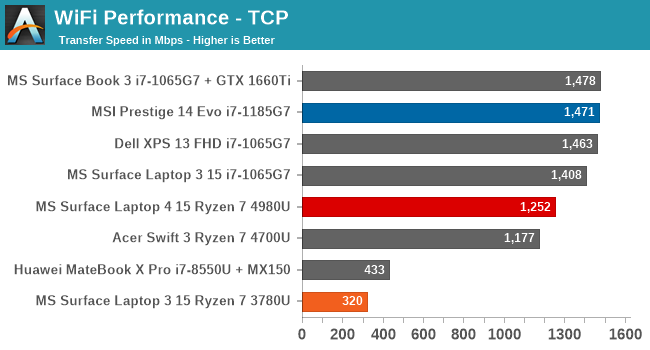
Performance is excellent. The Intel Ice Lake / Tiger Lake powered notebooks have the CVNi connected AX201, which does offer a slightly higher maximum transfer rates, but even the more traditional AX200 does very well over Wi-Fi 6. As is usual for Intel network adapters, reliability was top-notch.
Audio / Video
Microsoft offers Omnisonic speakers with Dolby Atmos support, and they conveniently locate the speakers underneath the keyboard. This faces the speakers towards the listener, and the result is surprisingly good.
Audio separation is quite good for a laptop computer, and while they lack the low-end performance of all notebooks, the speakers sound good in the mid and high ranges, and get plenty loud, with 84-85 dB(A) measured an inch over the trackpad.
On the camera front, the Surface Laptop 4 offers just a 720p webcam, although it does include Windows Hello IR support for fast logins. The laptop includes dual far-field microphones as well.
Thermals
Packing in eight cores, sixteen threads, and 8 CUs of Vega integrated graphics, the Surface Laptop 4 is the most powerful Renoir powered laptop in its class. The Ryzen 7 4980U offers the highest peak frequency, at 4.4 GHz, of the Renoir U lineup, which is the 15-Watt range.
Sadly, the performance monitoring tools we use were not able to poll the processor for power usage data, so we can’t get a proper feel on what kind of sustained power draw the laptop achieves, but Renoir has been quite power efficient, so it is likely in the 15-20 Watt range. We were able to poll sustained frequencies though. The Surface Laptop 4, under 100% load, quickly hit its 4.4 GHz peak, and then ran at a sustained 3 GHz for the rest of the run. There was no frequency degradation over time which would indicate the laptop was overheating.
Cooling was also very impressive. Despite the performance, Microsoft has been able to tune the fans to keep very quiet. Under most conditions, the fans are not even active, but under full load, the fans only registered 44 dB(A) even after over an hour of sustained load. That is very impressive.
Software
One of the most refreshing points in Surface ownership is that the Surface team does not install any extra software on the notebook. You don’t need to worry about browser plug-ins, antivirus trials, or the like. The only app that is installed is the Surface App, where you can get information about the device, and configure accessories such as the pen.
The Surface App works well, but it would be nice to see Microsoft give it some love. It has not really changed much in the last several years. Some additional functionality would be appreciated. It offers only the most basic functionality and support access.
One such feature that would be appreciated is the ability to set the maximum battery charge level. If you are a person that normally docks the device, being able to set the maximum battery level to something other than 100% can help prolong the life of the battery, and is functionality that other manufacturers do add. The Surface device offers two color profiles, with sRGB and Enhanced, and would it not be nice to be able to choose that in the Surface app, where the Surface app could explain what the settings do, rather than just a drop-down in the display settings with no explanation? It feels like there is a lot more than can be done here to enhance ownership. The Surface app is easy to use, it looks great, and it could use a bit more functionality.


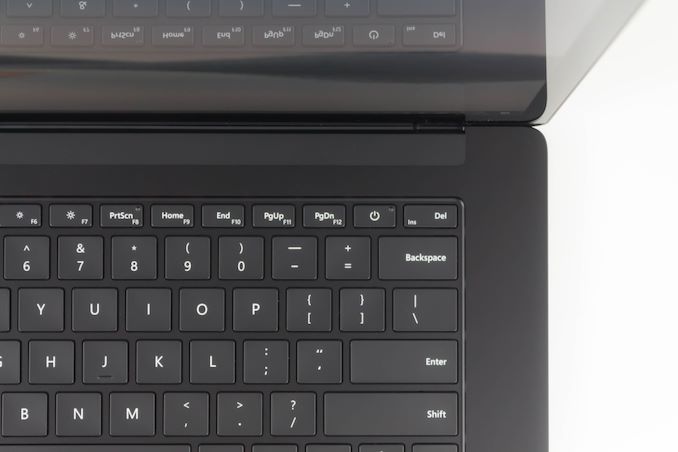

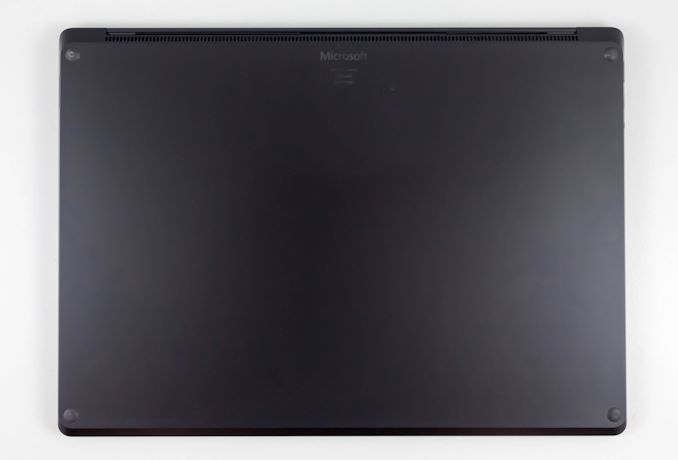
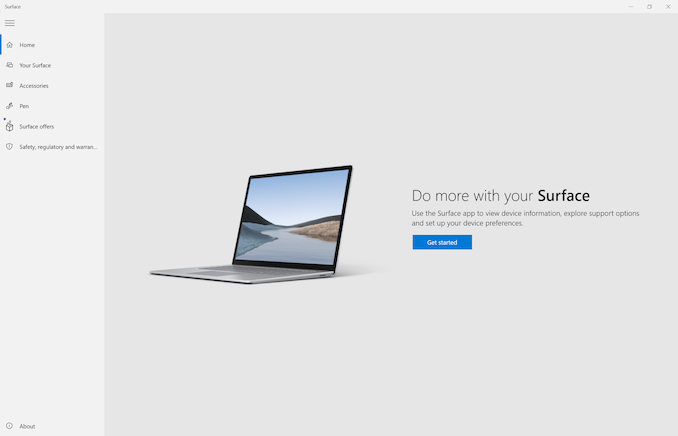
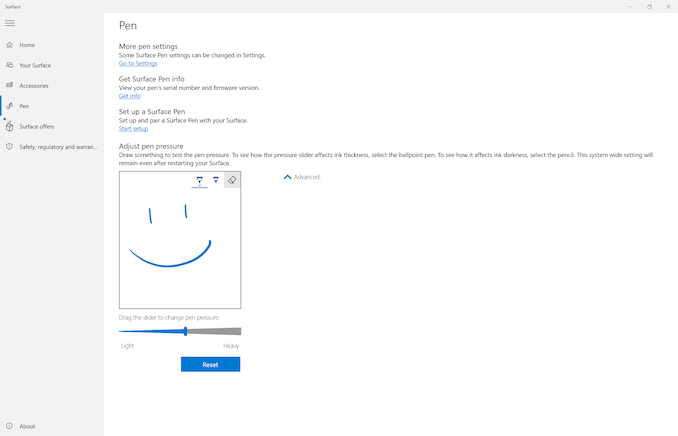








98 Comments
View All Comments
richardshannon77 - Monday, May 10, 2021 - link
I've been working at home for the past year using a grand total of 0 type-A ports on my laptop. I have a type-C connection to a type-C dock and a type-A BT dongle attached to that for my mouse. I suspect that this is along the lines of what the gods of technological advancement had in mind. At this point, it's type-C for the win. Although, I can't figure out where to put my 3.5" floppies :/saratoga4 - Thursday, May 6, 2021 - link
Perfectly fine to have 1 USB-C port, but since its used for charging there should be at least two other ports. Doesn't matter what they are, just give me the ability to have a thumb drive and mouse while charging.This is something the (much smaller) Dell XPS 13 devices do a lot better. My older model has charging, 2x USB and TB. They apparently had so much space left over they even threw in an SD card slot. A 15" laptop shouldn't have so much less.
s.yu - Sunday, May 9, 2021 - link
For a second I thought that was an iPP there. Turns out there's 1A, 1C and the headphone jack, that's bad but not unusable.Kevin G - Thursday, May 6, 2021 - link
I think you're looking at it backwards as computer manufacturers have learned one thing: consumers will continue to buy products they don't like if there are no alternatives at the prices they want. Consumers have given up fighting as pricing has become the dominant factor and people don't want to spend more, especially in a market whose pricing has been slowly creeping up of late.The reduction of the number of ports historically has made sense for the most part: USB has won out. However with Type-C that can also carry power, things do get more complicated as you can lose a data port for a peripheral when you need to charge the unit. Devices that only have two USB ports feel anemic in this regard as users do notice when they'll have to pull double duty in a crunch.
Alistair - Thursday, May 6, 2021 - link
Some of what you said makes sense. But removeable batteries and storage are next level, not USB port level priorities. Come On. Apple charges $800 for 1TB storage that I can buy for $100 to add to the Surface. Bam, I'm interested in the Surface. Because my phone lacks a removeable battery, I generally upgrade every 24 months as the phone won't last. Removeable batteries enable 3 and 4 year ownership. These are not "USB port" level myopia.Kamen Rider Blade - Friday, May 7, 2021 - link
The point is that Renoir offers more ports internally on it's SoC.1x USB 3.2 Gen1 Type-C
5x USB 3.2 Gen1 Type-A
2x USB 2.0 Type-A
That's what is natively available, why not implement all of those USB ports?
MS doesn't want to maximize the features or ports on Renoir, that's their choice.
But to the end user, it's cheapening out on features that are available on the SoC and not used.
grant3 - Tuesday, May 11, 2021 - link
Your guarantee is now broken: I would buy a surface laptop if they included a single additional thunderbolt port.You're probably right that -many- people do not care about ports, but that is changing quickly as people set up their work-from-home hardware and start to realize how damn vital having a hub to connect their monitors and other peripherals is.
Apple, Dell, and other makers got the memo years ago. They give their premium 15" laptops at least 3+ ports. Microsoft apparently thinks it can replicate Apple's "Remove features and raise the price" approach to hardware success, but haven't clued into the fact that it only works when they simultaneously offer -some- compelling alternative to the hardware they removed.
Eletriarnation - Thursday, May 6, 2021 - link
They could have rearranged the layout and added to the BoM cost to get in a second Type-A port which probably >95% of the user base won't ever need. Or, they could tell that <5% to buy a hub and deal with it.drothgery - Thursday, May 6, 2021 - link
Lots of people use external devices; I've got a TB3/USB-C dock that I connect my home or work laptop to that's chained to a monitor, keyboard, mouse, power, and wired internet.Pretty much no one uses optical media on laptops (or desktops, to be honest), which is why you have to use an external drive for it even on big clunky gaming laptops.
Calin - Friday, May 7, 2021 - link
The volume and weight of an optical disk for laptops compares to a 48Wh battery.You could easily fit one more 2.5 inch SATA SSD _and_ another 20Wh of battery inside that, or SSD plus one M2 plus on SODIMM, and so on.
Even if 17" gaming laptops are huge, their internal space is at a premium due to the cooling necessary for the CPU and GPU. In this case, the volume and weight of the optical drives give you another 20% cooling capacity.
One of my university colleagues had a computer (in a tower case) with a CD drive (650 MB) and a 420MB hard drive. Even if that would have been a laptop, losing so much volume to removable media larger than the hard drive would have been a win.
Not so much for the present - 9GB double side double density DVDs or 50GB BluRays do not compare well to even 256GB SSD of the low end devices.